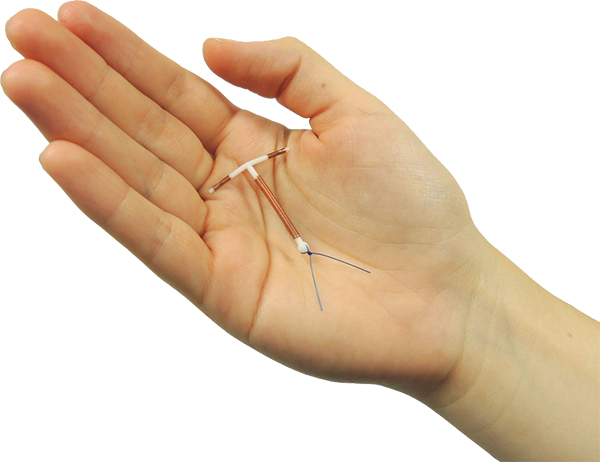The Copper IUD is a small plastic device which has copper wire wrapped around its stem. It’s placed inside the uterus by a specially trained doctor or nurse and stays there for 5 or 10 years depending on the type of device.
How does it work?
- The copper is toxic to the egg and sperm which stops sperm from fertilising the egg.
- Slows the egg’s movement to delay sperm and egg meeting.
- Stops a fertilised egg from implanting in the uterus.
How well does it work?
The Copper IUD is 99.5% effective at preventing pregnancy.
What are the benefits?
- You don’t have to remember to take a pill every day.
- It starts working right away.
- Fertility returns as soon as it’s taken out.
- Doesn’t contain any hormones.
- Safe to use if you’re breastfeeding or can’t use hormonal methods of contraception.
IUDs can be used by most people, including young people.
What are the downsides?
- Copper IUDs are more costly even with a valid Medicare card, but still cost-effective in the long run.
- Copper IUDs don’t protect against STIs but you can use condoms at the same time.
- You may experience some irregular bleeding in the first few months.
- You may experience heavier or longer mentrual period.
- It involves a procedure to put the IUD inside the uterus as well as when the IUD is removed. Putting the IUD into the uterus can be a bit painful, especially if you haven’t had children yet.
- There is a small chance it can come out by itself.
Are there side effects?
It is rare to have serious health problems with the copper IUD. You may experience:
- heavier periods which last longer
- an increase in vaginal discharge
Can anyone use a Copper IUD?
Most people can use a Copper IUD. It is suitable for people who cannot or prefer not to use a hormonal form of contraception.
Where do you get it?
A Copper IUD must be inserted and removed by a trained doctor or nurse. This can be done at a Family Planning Australia clinic, by some GPs or by a gynaecologist.



